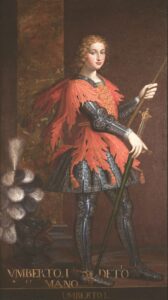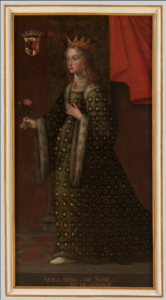
Eudes Odon De Savoie
Date of Birth
1017 (1020)
Place of Birth
Geneva, Geneva, Switzerland
Towns / Cities Moved Into
Geneva, Geneva, Switzerland
Turin, Piedmont, Italy
Savoie, Champagne, France
Known Occupation
Conte di Savoia alla morte del fratello Amedeo Marchese of Susa
Religion
-
Spouse
Death Information
Year of death
3 March 1060
Place of death
Chambéry, Savoie, Auvergne-Rhône-Alpes, France
Cause of death
-
Burial location
Cattedrale di San Giovanni Battista in Turin, Piedmont, Italy
Parents

Humbert Desavoie

Auxila Vonlenzburg
Marital Status


Married Adelaide De Suze
1046
Siblings


Children





Narrative / Story
In the picturesque city of Geneva, Switzerland, in the year 1017, a child of noble heritage was born, destined to leave a profound mark on history. Eudes Odon de Savoie, raised in the opulent halls of Geneva, was groomed from a young age for leadership and governance. His early life, filled with privilege and promise, was a prelude to his significant role in shaping the destiny of the House of Savoy and its territories.
As he matured, Eudes Odon embraced his role as Conte di Savoia following his brother Amedeo’s death. His aspirations and capabilities in leadership were soon put to the test. In 1046, a pivotal moment in his life unfolded as he married Adelaide De Suze. This union was not just a marital alliance but a strategic move that brought vast estates in northern Italy under his control, marking a significant shift in the House of Savoy’s expansion strategy.
However, this migration to Turin, Piedmont, Italy, was not without its challenges. The family encountered socio-economic issues tied to their race and foreign origins. In an era where discrimination was prevalent, Eudes Odon and his family had to navigate through these hurdles to establish their place in Italian society.
Despite these challenges, Eudes Odon’s leadership led to the flourishing of the House of Savoy in the Italian territories. Their influence grew as they became the Marchese of Susa, bringing prosperity and development to the region. Amidst political intrigues, religious conflicts, and the Great Schism of 1054, Eudes Odon and his family navigated the complexities of faith and loyalty in turbulent times.
Eudes Odon’s responsibilities as a Conte and Marchese were vast, involving land management, tax collection, and justice administration. Their court became a hub of cultural and intellectual activity, fostering arts and culture.
The family experienced both joy and sorrow. The birth of their children, Pierre, Amedee, Berthe, Adelaide, and Oddon, brought happiness, but Eudes Odon’s untimely death at 37 in Chambéry, Savoie, left a void in the family.
Eudes Odon’s legacy endured through his descendants, with the House of Savoy continuing to influence European history. Their territories expanded, and they played significant roles in the politics and culture of the regions they ruled.
Reflecting on Eudes Odon de Savoie’s life, we see a narrative of resilience, ambition, and the enduring impact of a noble family. From Geneva’s halls to Turin’s splendor, his journey stands as a testament to a family that persevered through challenging times, leaving a lasting legacy on the lands they called home.
